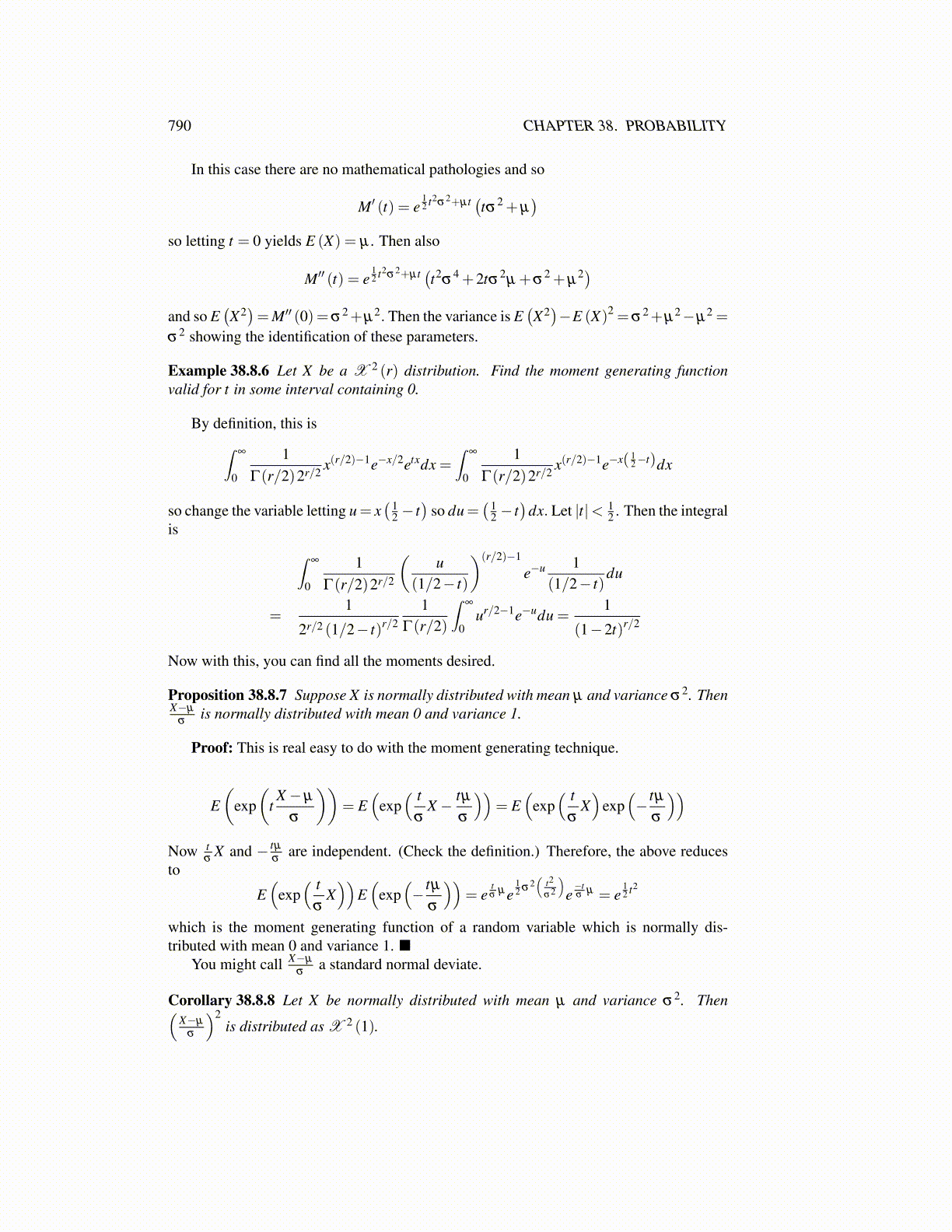
790 CHAPTER 38. PROBABILITY
In this case there are no mathematical pathologies and so
M′ (t) = e12 t2σ2+µt (tσ2 +µ
)so letting t = 0 yields E (X) = µ . Then also
M′′ (t) = e12 t2σ2+µt (t2
σ4 +2tσ2
µ +σ2 +µ
2)and so E
(X2)=M′′ (0)=σ2+µ2. Then the variance is E
(X2)−E (X)2 =σ2+µ2−µ2 =
σ2 showing the identification of these parameters.
Example 38.8.6 Let X be a X 2 (r) distribution. Find the moment generating functionvalid for t in some interval containing 0.
By definition, this is∫∞
0
1Γ(r/2)2r/2 x(r/2)−1e−x/2etxdx =
∫∞
0
1Γ(r/2)2r/2 x(r/2)−1e−x( 1
2−t)dx
so change the variable letting u= x( 1
2 − t)
so du=( 1
2 − t)
dx. Let |t|< 12 . Then the integral
is ∫∞
0
1Γ(r/2)2r/2
(u
(1/2− t)
)(r/2)−1
e−u 1(1/2− t)
du
=1
2r/2 (1/2− t)r/2
1Γ(r/2)
∫∞
0ur/2−1e−udu =
1
(1−2t)r/2
Now with this, you can find all the moments desired.
Proposition 38.8.7 Suppose X is normally distributed with mean µ and variance σ2. ThenX−µ
σis normally distributed with mean 0 and variance 1.
Proof: This is real easy to do with the moment generating technique.
E(
exp(
tX−µ
σ
))= E
(exp( t
σX− tµ
σ
))= E
(exp( t
σX)
exp(− tµ
σ
))Now t
σX and − tµ
σare independent. (Check the definition.) Therefore, the above reduces
to
E(
exp( t
σX))
E(
exp(− tµ
σ
))= e
tσ
µ e12 σ2
(t2
σ2
)e−tσ
µ = e12 t2
which is the moment generating function of a random variable which is normally dis-tributed with mean 0 and variance 1. ■
You might call X−µ
σa standard normal deviate.
Corollary 38.8.8 Let X be normally distributed with mean µ and variance σ2. Then(X−µ
σ
)2is distributed as X 2 (1).